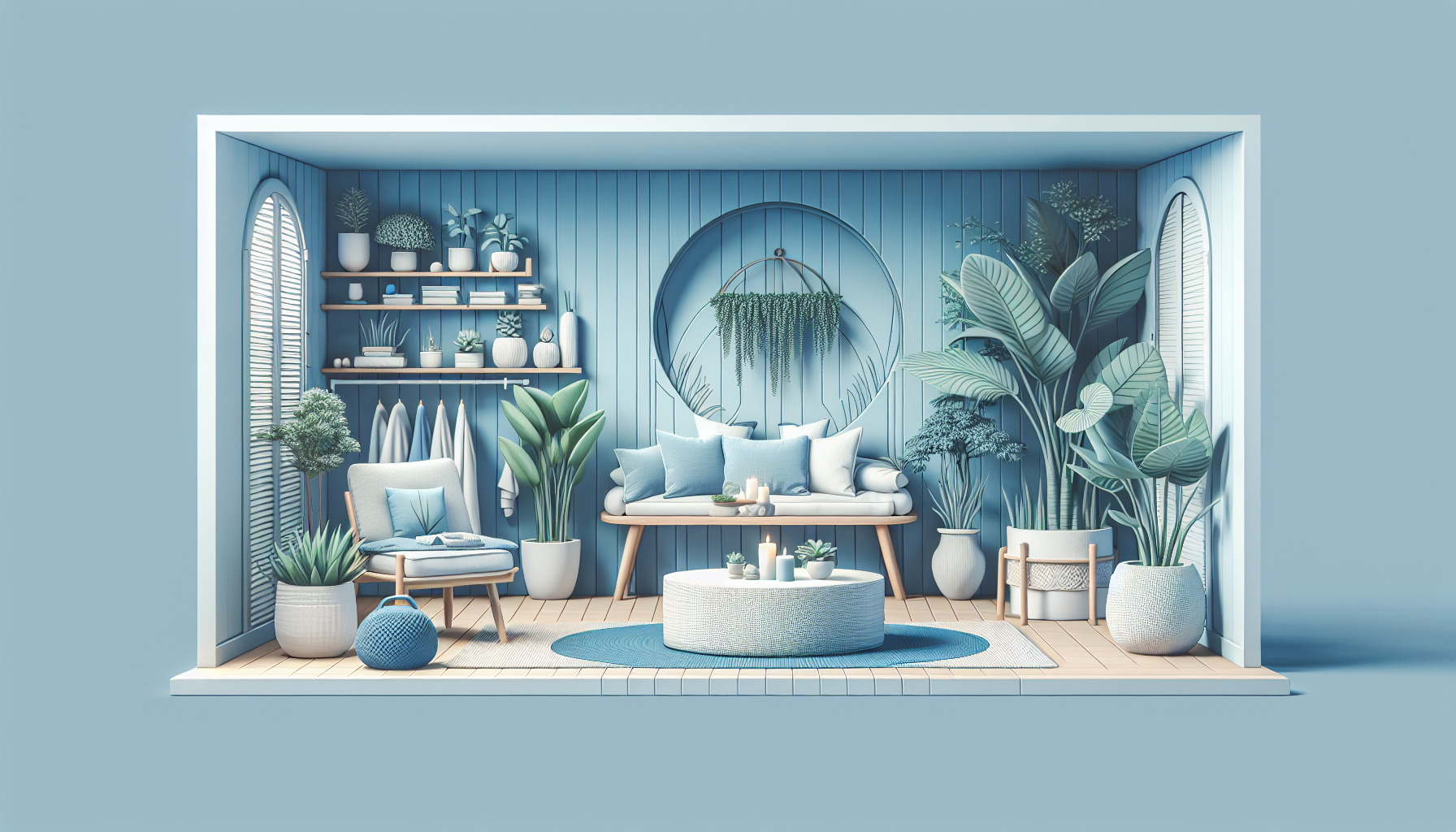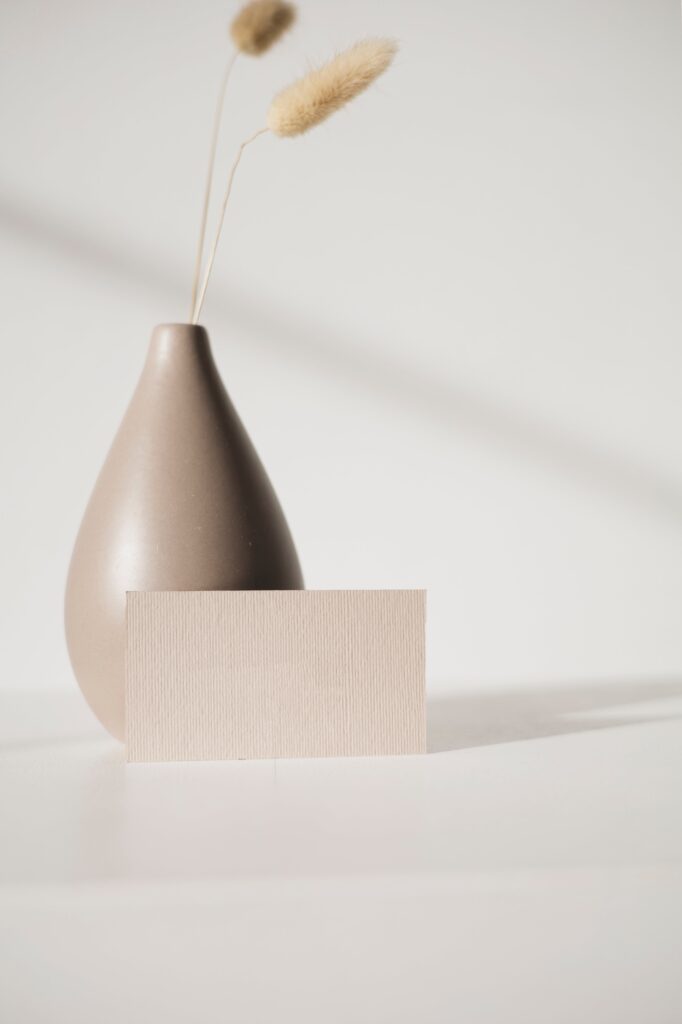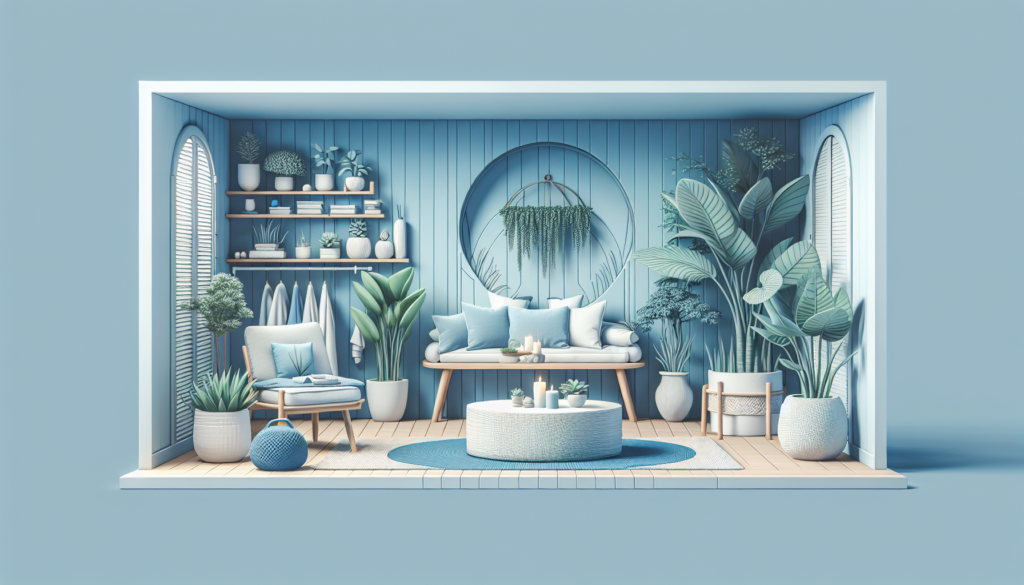
Looking to create a peaceful and tranquil meditation or yoga space in your home? If so, you’re in the right place! In this article, we’ll provide you with some valuable tips for designing a space that promotes relaxation, mindfulness, and inner peace. Whether you have a dedicated room or just a small corner, we’ll explore ideas to help you create a serene environment that enhances your meditation or yoga practice. So, read on to discover how to infuse your home with the perfect ambiance for your spiritual journey.
Choosing the Right Space
Evaluate the Available Space
When designing a meditation or yoga space, the first step is to evaluate the available space in your home. Consider the size of the area and determine if it can comfortably accommodate your practice. It is essential to have enough room for you to move freely without feeling restricted. Additionally, think about the shape of the space and how it will fit with your intended layout and design.
Consider Natural Lighting
Natural lighting can have a significant impact on the ambiance of your meditation or yoga space. Choose a room with large windows or skylights to allow ample sunlight to filter in. Natural light not only brightens up the space but also creates a calming and soothing atmosphere. If the room doesn’t have access to natural light, consider adding soft lighting options to replicate the serene effect.
Ensure Privacy and Quietness
Privacy and quietness are essential elements for a peaceful meditation or yoga practice. Select a space that is situated away from high-traffic areas of your home, such as the living room or kitchen, to minimize distractions. If possible, opt for a room that can be easily closed off or separated from the rest of the house to create a sense of seclusion and privacy. Noise-canceling features, such as soundproofing materials or white noise machines, can also help minimize external disturbances and create a serene environment.
Creating a Calming Atmosphere
Select a Soothing Color Palette
The choice of colors in your meditation or yoga space plays a crucial role in creating a calming atmosphere. Opt for a soothing color palette, such as muted blues, soft greens, or earthy neutrals, to promote relaxation and tranquility. These colors have a natural affinity with nature and can evoke a sense of balance and harmony during your practice. Avoid using bold or vibrant hues that may be too stimulating or distracting.
Incorporate Natural Elements
Bringing natural elements into your meditation or yoga space can help create a serene and grounding atmosphere. Consider adding elements such as indoor plants, crystals, or a small water fountain to evoke a connection with the natural world. These elements can enhance the overall ambiance and contribute to a more calming and peaceful practice.
Use Soft Lighting
Lighting plays a crucial role in setting the mood in your meditation or yoga space. Opt for soft and diffused lighting options, such as table lamps or floor lamps with warm-toned bulbs, to create a gentle and soothing glow. Harsh or bright lights can be too stimulating and disrupt your practice. Experiment with different lighting arrangements to find what works best for you and helps you get into a peaceful state of mind.

Furniture and Decor
Opt for Comfortable Seating
Choosing comfortable seating is essential for extended periods of meditation or yoga practice. Consider a cushioned meditation cushion or a supportive yoga mat for sitting or lying down comfortably. Additionally, ensure that the seating aligns with your body’s needs and preferences, providing adequate support for your back and joints.
Include Supportive Cushions and Mats
To enhance your comfort during meditation or yoga, include supportive cushions and mats. Cushions can provide extra support for your hips and back, especially during seated postures. Yoga mats offer a non-slip surface and cushioning for your body during asanas (yoga poses). Invest in high-quality, durable cushions and mats that cater to your specific requirements.
Add Minimalist Decor
When it comes to decor, minimalism is key in a meditation or yoga space. Keep the design simple and clutter-free to promote a sense of calm and focus. Avoid excessive ornamentation and opt for clean lines and minimalistic furniture. Embrace open spaces and allow the room to breathe, creating an uncluttered environment that encourages a clear and peaceful mind.
Incorporate Plants and Greenery
Introducing plants and greenery into your meditation or yoga space can enhance the sense of serenity and tranquility. Choose low-maintenance indoor plants that purify the air and create a connection with nature. Snake plants, peace lilies, or bonsai trees can add a touch of natural beauty and bring a calming presence to your sacred space.
Organizing the Space
Ensure Ample Storage
Keeping your meditation or yoga space organized is essential for maintaining a calm and peaceful environment. Ensure that you have ample storage options to store props, cushions, mats, and other essentials neatly. Utilize shelves, baskets, or storage cabinets to keep the space clutter-free and create a sense of order and tranquility.
Arrange the Space Spatially
Consider the spatial arrangement of your meditation or yoga space to maximize its functionality and flow. Arrange furniture and props in a way that allows for smooth movement and easy access to different areas of the room. Experiment with different layouts to find what works best for your practice, keeping in mind that spaciousness and accessibility are key factors.
Implement Functional Layout
Creating functional zones within your meditation or yoga space can enhance its usability and organization. Designate specific areas for meditation, yoga practice, and relaxation. This separation helps maintain focus and clarity during your practice. Use rugs, curtains, or screens to visually define these zones while maintaining a cohesive overall design.
Create Zones for Different Activities
In addition to the functional layout, consider creating zones that cater to different activities within your meditation or yoga space. Have a corner dedicated to meditation, with a comfortable cushion or chair. Set up a designated area for asanas or yoga poses, with ample room to move and stretch. Including a relaxation zone with a cozy seating area or hammock can provide a space to unwind and reflect after your practice.

Soundproofing and Noise Reduction
Invest in Soundproofing Materials
Creating a quiet and peaceful space for meditation or yoga may require soundproofing solutions. Invest in soundproofing materials such as acoustic panels or curtains to minimize external noise and create a serene atmosphere. These materials can absorb or block sound, allowing you to focus inward without disturbance.
Use White Noise Machines or Soft Music
If complete silence is not possible in your surroundings, consider using white noise machines or playing soft, soothing music to mask external noises. White noise machines generate a consistent background noise that can help drown out disruptions. Soft instrumental music or nature sounds, such as gentle rainfall or ocean waves, can also enhance relaxation and create a serene environment.
Minimize External Disturbances
To further minimize external disturbances, establish ground rules with family members or roommates, requesting quiet during designated meditation or yoga times. Inform them about the importance of maintaining a peaceful environment and how it contributes to your overall well-being. By setting boundaries and communicating your needs, you can create a space that is conducive to your practice and free from distractions.
Emphasizing Mindfulness
Create a Dedicated Meditation Corner
Designating a specific corner of your meditation or yoga space for mindfulness practices can help cultivate a sense of focus and intention. Set up a comfortable sitting area with cushions or a meditation bench. This dedicated space serves as a visual reminder to prioritize self-care and can aid in establishing a consistent meditation routine.
Incorporate Inspirational Quotes or Art
Inspirational quotes or art can serve as reminders and sources of inspiration during your meditation or yoga practice. Hang up framed quotes or artwork that resonates with you and embodies the principles you aspire to incorporate into your daily life. These visual cues can enhance the spiritual and reflective aspects of your practice.
Include a Shrine or Altar
For those interested in incorporating a spiritual or religious aspect into their practice, consider creating a shrine or altar within your meditation or yoga space. Arrange meaningful objects, such as statues, candles, incense, or sacred symbols, on a dedicated surface. This sacred space can serve as a focal point for your spiritual contemplation, grounding your practice in a deeper sense of connection and devotion.

Aromatherapy and Scent
Use Essential Oils or Incense
Aromatherapy can enhance the sensory experience during your meditation or yoga practice. Choose essential oils with calming properties, such as lavender, chamomile, or sandalwood, and use a diffuser to disperse their fragrance into the air. Alternatively, light incense sticks or scented candles to create a soothing and aromatic ambiance.
Select Soothing Scents
The choice of scents can significantly impact your mood and relaxation levels. Select scents that promote a sense of tranquility and peace, avoiding overpowering or synthetic fragrances. Experiment with different essential oils or incense blends to find scents that resonate with you and create the desired atmosphere in your meditation or yoga space.
Technology and Electronics
Minimize Digital Distractions
In a world filled with digital distractions, it is crucial to minimize the presence of technology in your meditation or yoga space. Remove or limit the visibility of electronic devices such as phones, tablets, or televisions to maintain a focused and present mindset. Disconnecting from the digital world allows for a deeper and more meaningful practice.
Incorporate Ambient Sound Machines
Ambient sound machines can enhance the ambiance of your meditation or yoga space by providing a soothing background noise. Choose machines that offer natural sounds like rain, ocean waves, or gently rustling leaves. These soft sounds can aid in relaxation, mask external noises, and induce a sense of tranquility.
Use Meditation and Yoga Apps
While limiting technology is essential, there are certain meditation and yoga apps that can complement and support your practice. Look for apps that offer guided meditations, soothing music, or yoga routines suitable for your skill level and goals. Use these apps sparingly and mindfully, incorporating them as helpful tools rather than sources of distraction.

Temperature and Ventilation
Ensure Proper Ventilation
Proper ventilation is crucial in your meditation or yoga space to ensure a fresh supply of air and maintain a comfortable environment. Good airflow prevents stuffiness and helps maintain focus during practice. Ensure that windows can be opened easily, or consider installing a ceiling fan or air purifier to improve air circulation.
Maintain Comfortable Temperature
Maintaining a comfortable temperature is essential for a pleasant and relaxed meditation or yoga experience. Ensure that your space is adequately insulated and equipped with a thermostat or heater to adjust the temperature as needed. Experiment with different temperatures to find what suits your preferences and allows for a comfortable practice.
Consider Climate Control Options
In certain climates or seasons, temperature and humidity control may be necessary to create an optimal meditation or yoga space. Consider climate control options such as air conditioning or dehumidifiers to regulate the environment and ensure a comfortable ambiance year-round. Adapting the space to varying weather conditions promotes consistency and ease in your practice.
Creating a Personalized Space
Reflect Your Personal Style
Infuse your personality and personal style into your meditation or yoga space to make it feel truly your own. Incorporate colors, patterns, and textures that resonate with you. Display personal artwork or photographs that evoke positive emotions and memories. Let your space be a reflection of your unique preferences and tastes, creating an environment that feels comforting and inspiring.
Incorporate Meaningful Objects
Including meaningful objects in your meditation or yoga space can add a layer of depth and significance to your practice. Place meaningful symbols, mementos, or items that hold spiritual or emotional significance on shelves or altars. These objects can serve as reminders of your values and intentions, infusing your practice with a sense of purpose and connection.
Add Personal Touches
To further personalize your space, add small touches that bring you joy and comfort. Consider incorporating soft blankets, cozy throw pillows, or a warm rug to create a cozy and inviting atmosphere. Light scented candles or use decorative lighting fixtures that align with your aesthetic preferences. These personal touches will create a sense of warmth and familiarity within your meditation or yoga space.
Creating a meditation or yoga space within your home is an opportunity to curate a sanctuary dedicated to your well-being and self-care. By carefully considering the available space, incorporating calming decor and elements from nature, organizing the area efficiently, and ensuring a serene atmosphere, you can create a personalized space that supports a deeper sense of mindfulness and relaxation. Embrace the power of design to create a space that invites tranquility and fosters a connection with your inner self.

